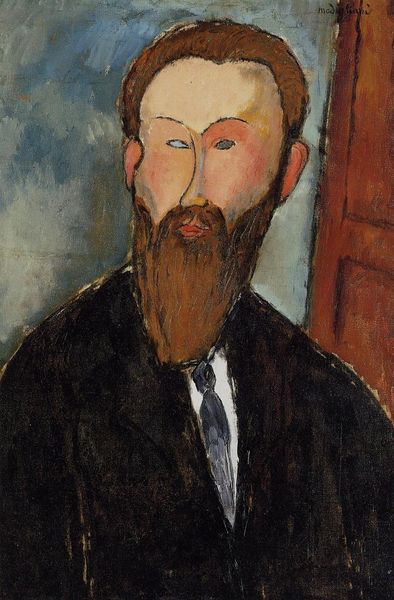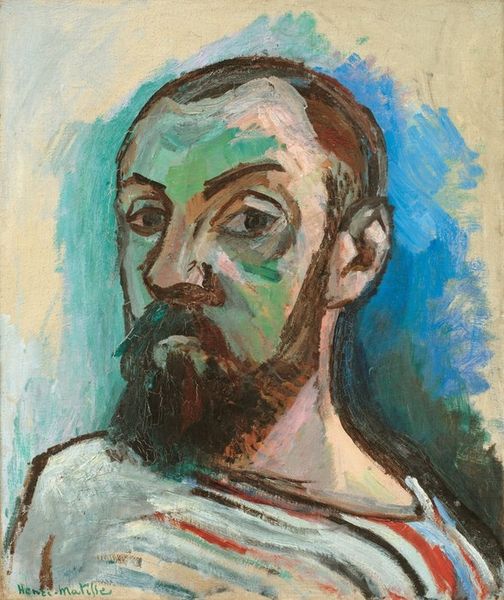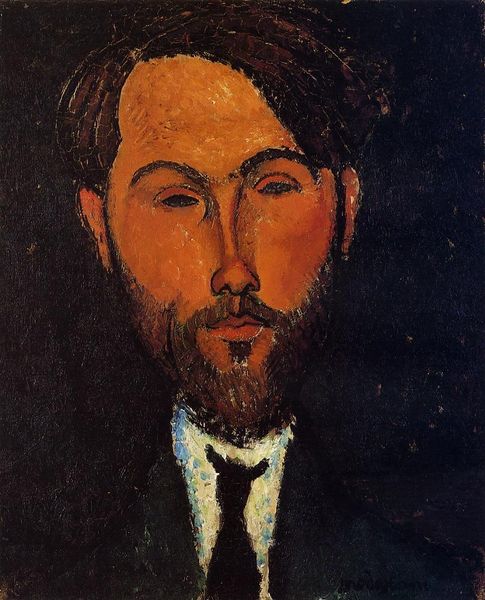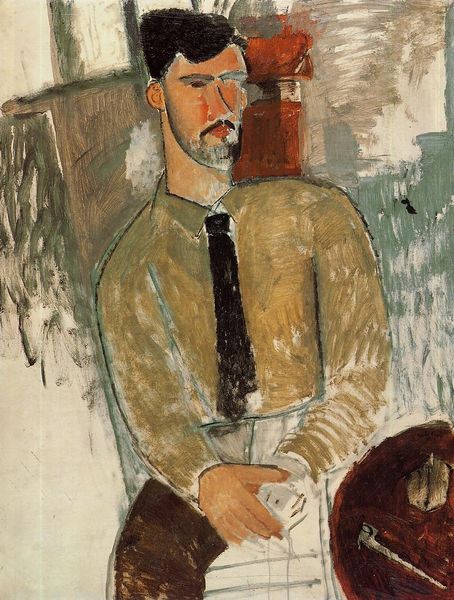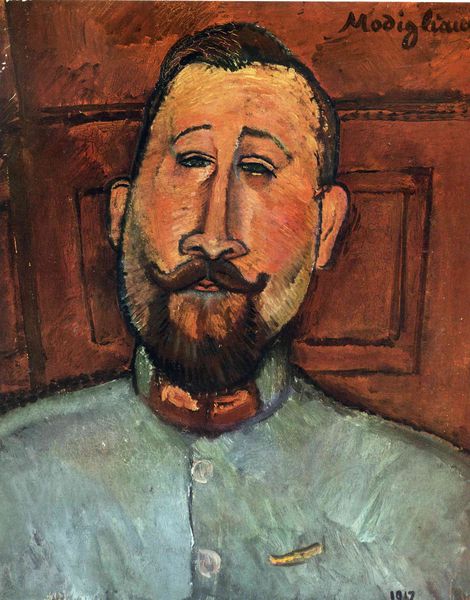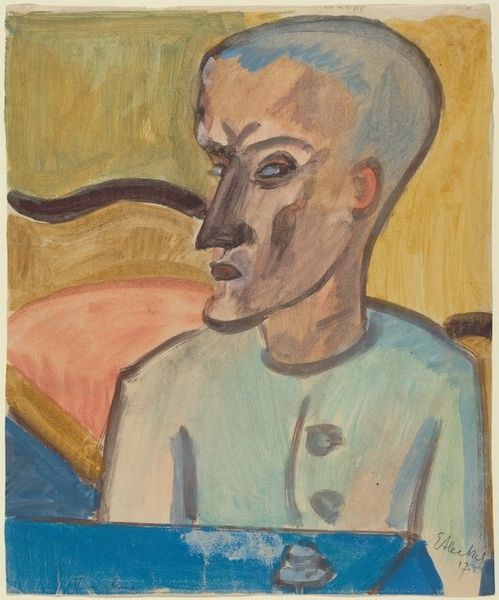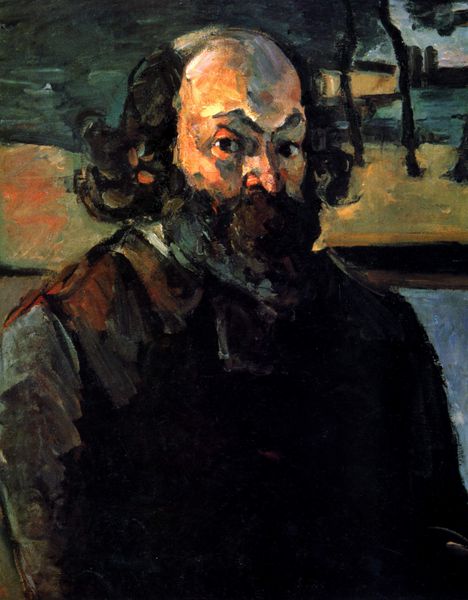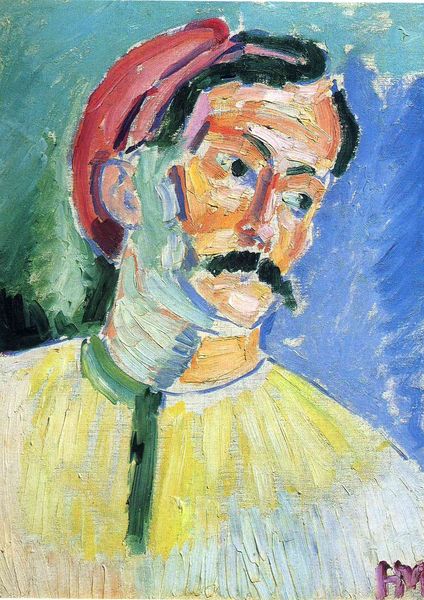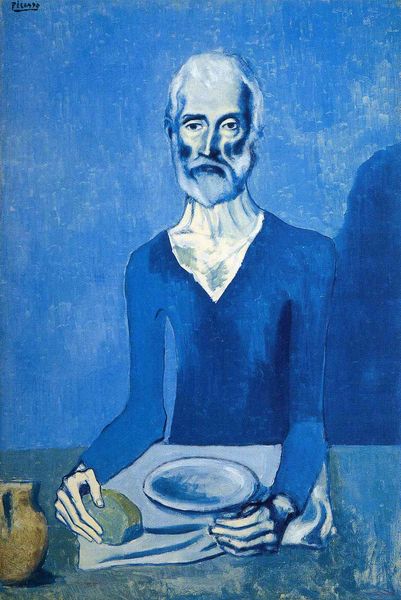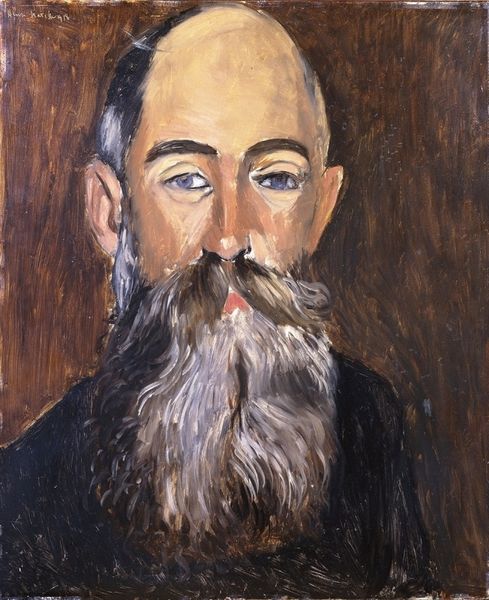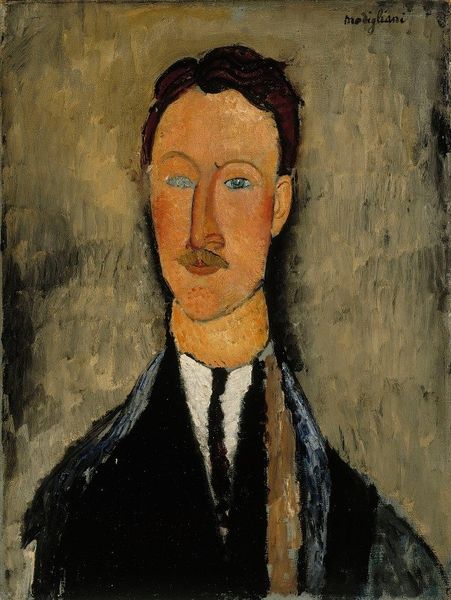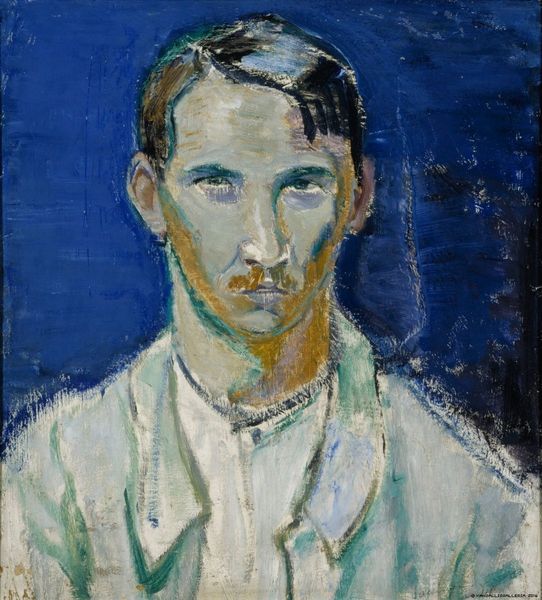
Dimensions: 63.5 x 51 cm
Copyright: Public domain
Editor: So, this is Kazimir Malevich’s "Head of Peasant," painted in 1932 using oil paint. The composition and subject feel... disjointed, almost unsettling. The landscape backdrop clashes with the roughly rendered portrait. What structural relationships define the experience of this work? Curator: The formal strategy employed presents a duality. Note the juxtaposition of geometric abstraction in the landscape with the crude figuration of the head. What does the contrast of sharp linearity in the fields, and then the hazy lines forming the clouds and the peasant’s beard do to the viewing experience? Editor: The straight lines in the fields bring focus and a sense of order, I guess, but in the broader context, that is definitely interrupted by the figure's beard and face. It almost suggests an opposition between the rational and the irrational. Curator: Precisely. Reflect upon Malevich’s use of colour here. The vibrant yellows and blues. How do these colours relate to the thematic concerns of peasantry and the idealisation of labor versus lived experience, as constructed through its formal qualities? Is there a reading that reveals itself? Editor: It's interesting. On the one hand, these bright colours are so invigorating. But then, I notice the facial features – how disproportionate they are to each other. The colour harmony conflicts with the facial disharmony. Curator: An astute observation. Does this perhaps highlight a tension between the ideal and the reality that is meant to reflect some essential element of inner torment? Editor: It definitely changes my first reaction. I thought that the background wasn't quite as related to the rest, but the juxtaposition really adds a feeling of anxiety and instability to this “Head of a Peasant”. Thanks, this has changed the way I perceive this work. Curator: Indeed. A rigorous examination of form reveals that dissonance can, paradoxically, function as a cohesive force, informing meaning and provoking questions around perception and representation.
Comments
No comments
Be the first to comment and join the conversation on the ultimate creative platform.
